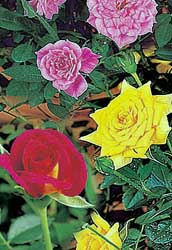
How to Grow, Propagate, Care for and use Roses.
Looking to enter the field of rose growing or to further your career potential?
Then further your knowledge with this unique and comprehensive rose growing course, aimed at both professionals and amateur growers.
The value of rose blooms extends beyond the ornamental garden; roses are grown for many reasons including: the cut flower trade, for perfume extraction, to harvest the hips and for rose oil. This course covers all these aspects and much more. Learn the history of the rose, the confusing rose classification system, how to identify the different species, their general cultural needs (soils, pests and disease management and pruning), how to use roses in garden design and how to produce a commercial rose crop.
Roses, often referred to as 'The Queen of the Garden', are one of the most popular and prized ornamental plants. They are included in the greatest gardens in the world and many claim roses to be the most beautiful flower in existence.
This course could set you on the path to success.